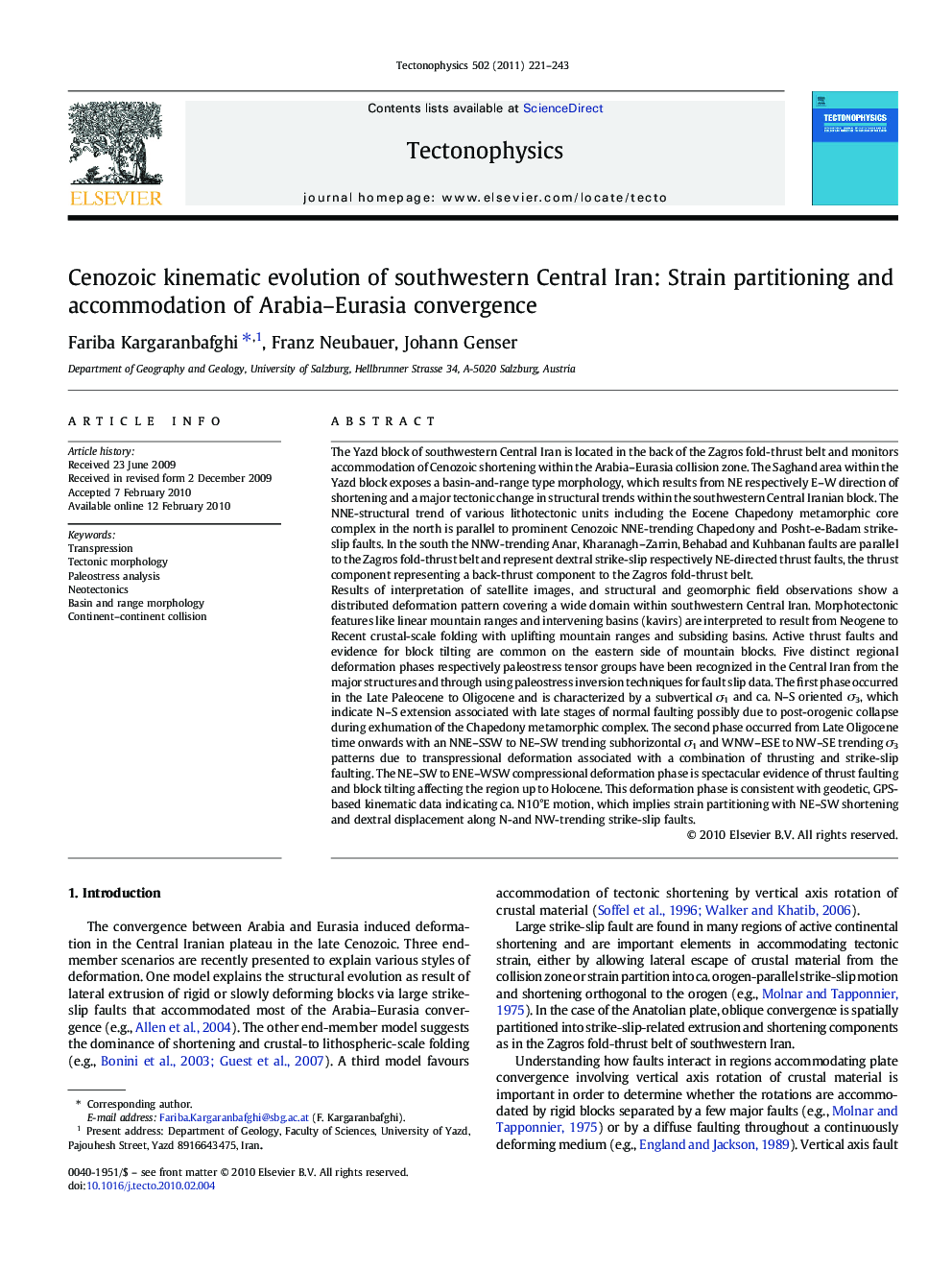| Article ID | Journal | Published Year | Pages | File Type |
|---|---|---|---|---|
| 4693238 | Tectonophysics | 2011 | 23 Pages |
The Yazd block of southwestern Central Iran is located in the back of the Zagros fold-thrust belt and monitors accommodation of Cenozoic shortening within the Arabia–Eurasia collision zone. The Saghand area within the Yazd block exposes a basin-and-range type morphology, which results from NE respectively E–W direction of shortening and a major tectonic change in structural trends within the southwestern Central Iranian block. The NNE-structural trend of various lithotectonic units including the Eocene Chapedony metamorphic core complex in the north is parallel to prominent Cenozoic NNE-trending Chapedony and Posht-e-Badam strike-slip faults. In the south the NNW-trending Anar, Kharanagh–Zarrin, Behabad and Kuhbanan faults are parallel to the Zagros fold-thrust belt and represent dextral strike-slip respectively NE-directed thrust faults, the thrust component representing a back-thrust component to the Zagros fold-thrust belt.Results of interpretation of satellite images, and structural and geomorphic field observations show a distributed deformation pattern covering a wide domain within southwestern Central Iran. Morphotectonic features like linear mountain ranges and intervening basins (kavirs) are interpreted to result from Neogene to Recent crustal-scale folding with uplifting mountain ranges and subsiding basins. Active thrust faults and evidence for block tilting are common on the eastern side of mountain blocks. Five distinct regional deformation phases respectively paleostress tensor groups have been recognized in the Central Iran from the major structures and through using paleostress inversion techniques for fault slip data. The first phase occurred in the Late Paleocene to Oligocene and is characterized by a subvertical σ1 and ca. N–S oriented σ3, which indicate N–S extension associated with late stages of normal faulting possibly due to post-orogenic collapse during exhumation of the Chapedony metamorphic complex. The second phase occurred from Late Oligocene time onwards with an NNE–SSW to NE–SW trending subhorizontal σ1 and WNW–ESE to NW–SE trending σ3 patterns due to transpressional deformation associated with a combination of thrusting and strike-slip faulting. The NE–SW to ENE–WSW compressional deformation phase is spectacular evidence of thrust faulting and block tilting affecting the region up to Holocene. This deformation phase is consistent with geodetic, GPS-based kinematic data indicating ca. N10°E motion, which implies strain partitioning with NE–SW shortening and dextral displacement along N-and NW-trending strike-slip faults.
